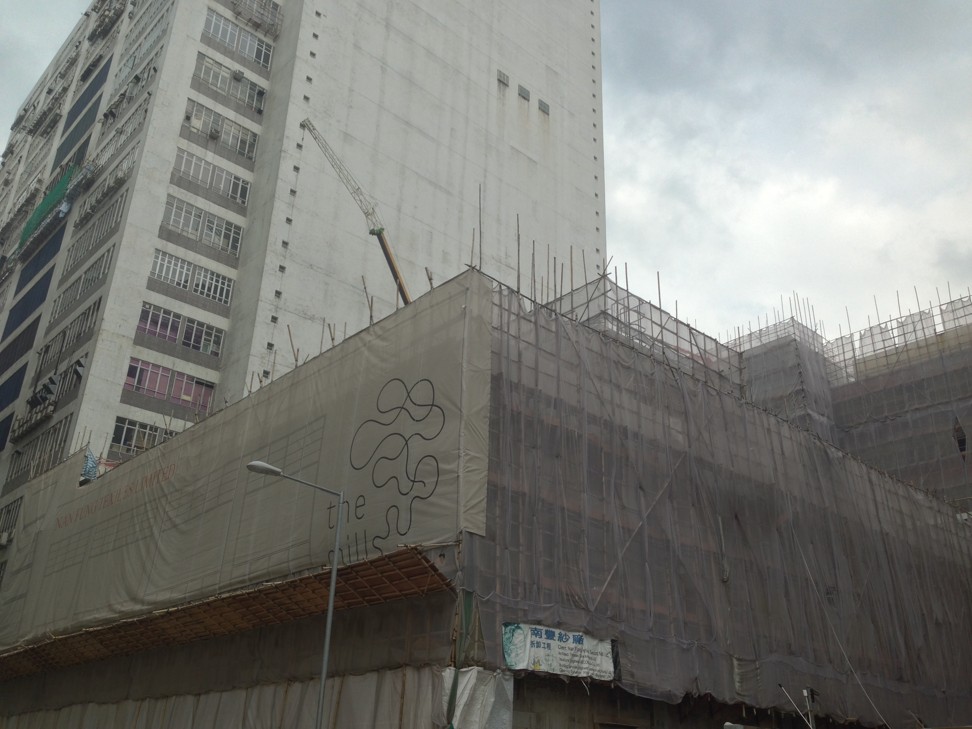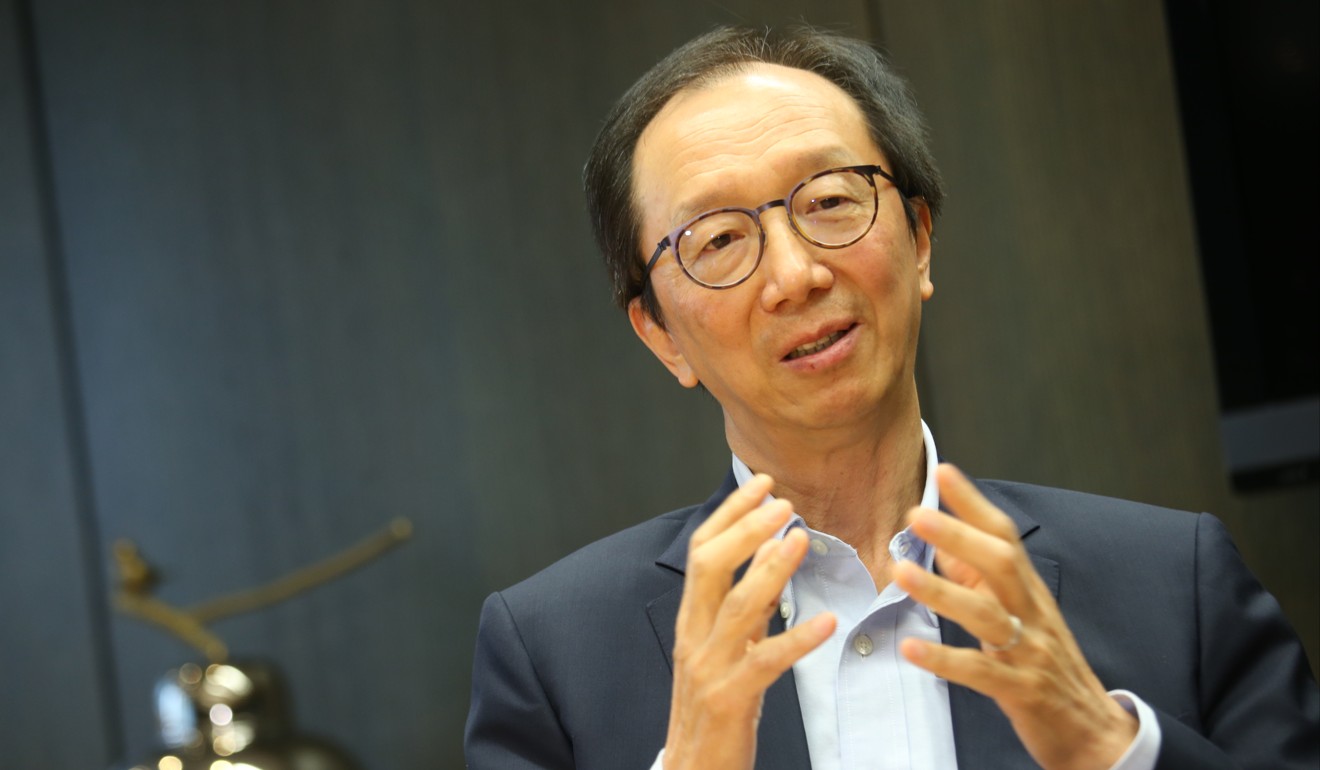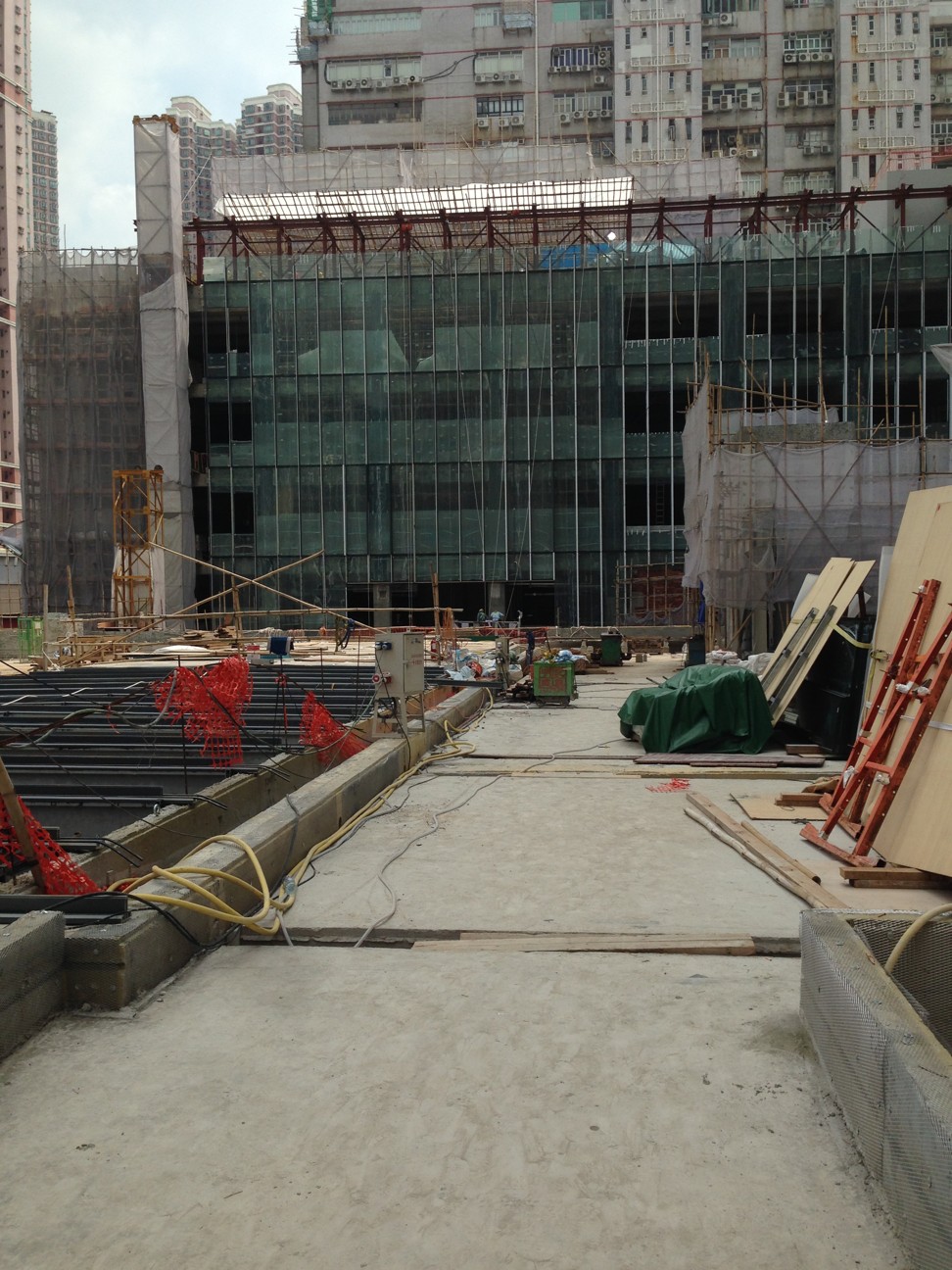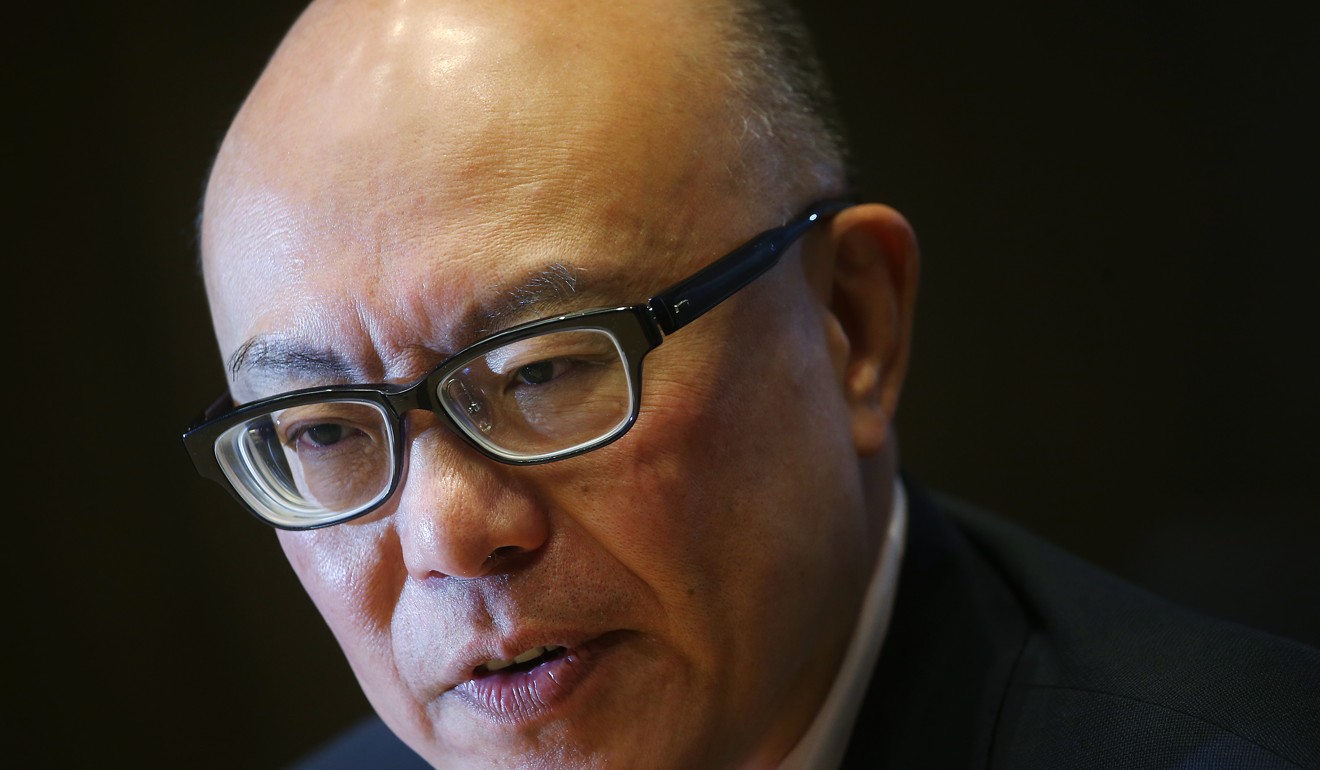
Inside the Hong Kong cotton mills being transformed from old eyesores into creative hub
Three former Hong Kong textile factories will reopen next year under the name The Mills and will feature an art gallery, a textile industry museum, a start-up incubator and shops, including established neighbourhood businesses
From the outside, 41 Pak Tin Par Street in Tsuen Wan looks like just another old factory building receiving the last rites before the first swing of the wrecking ball. The half-century-old low-rise owned by Nan Fung Group, a Hong Kong property developer, is a dinosaur in an era when luxury flat and office blocks are taking over the city’s old industrial districts.
Once deemed by middle-class families as inconveniently located at the end of the red MTR line, Tsuen Wan is now beyond “up-and-coming”. This spring, flats in the nearby Pavilia Bay development sold for more than HK$20,000 (US$2,560) per square foot, a level comparable to the south side of Hong Kong Island.
Mill revamp is cue for Hong Kong textile workers to reminisce, and upcycle
But the demolition man is not at work inside the Nan Fung mills, even though they are shrouded in construction mesh and choking with dust.

The group of three adjoining former textile factories will reopen next year under the name “The Mills”, with most of the original structures intact. There will be an art gallery, a textile industry museum, shops and restaurants, and a shared workspace for textile-related and wearable technology start-ups.
The factories have lain empty since 2008, when the last spinning machine was shut down after Nan Fung completed its transformation from family-run textile business to major property developer with hotels, a ship leasing and investment business, and a city grandee as chief executive: Antony Leung Kam-chung, Hong Kong’s former financial secretary.

The buildings used to be called Mill 4, 5 and 6 (numbers 1, 2 and 3 were knocked down in the 1980s) and they were built soon after the late Chen Din-hwa founded the company in 1954. Chen was one of the many Zhejiang industrialists who fled to Hong Kong with their assets after the Communist Party came to power.
On a recent visit to the site, the Post spotted a number of visual throwbacks that have been retained. For example, the bulky, rounded concrete stair banisters painted in institutional green and white, sprayed-on “no smoking” signs on the columns and, most noticeable of all, the red Chinese characters for Nan Fung Mills on the outside the buildings.
The couple of people who have experience from the mills days are close to retiring
But a lot has been changed since work began in 2016. Ray Zee, head of design at Nan Fung’s Hong Kong property division since 2009, likens the transformation to giving an elderly person a bionic upgrade.
Connecting glass bridges now link the three separate buildings. The entrance on Castle Peak Road will take visitors onto a new covered walkway connecting the three-storey Mill 6 with the six-storey Mill 5. Turn right, and you find yourself in an almost church-like space. The middle of the first and second floors have been knocked through to create a three-storey high atrium with a skylight on the roof letting in natural light. It will be used for catwalks and exhibitions showcasing both contemporary art and design as well as works from start-ups based in Fabrica, the incubator that will have a home on the upper floors of Mill 5.

This programme for new businesses involved in fashion, textile and wearable technology began two years ago, offering cash, mentorship and access to manufacturers and potential investors. Its alumni include Seventy Eight Percent, an upmarket bag maker founded by Israel-born entrepreneur Shai Levy, and Origami Labs, which is crowdfunding for a ringlike device that works like a Bluetooth earpiece.
Stories behind Hong Kong districts: Tsuen Wan – from Hakka farms to textile mills to a post-industrial future
There is a trend for established businesses to take start-ups under their wing, but Nan Fung’s role in Fabrica is unusual in that the company doesn’t have any in-house expertise.
“The couple of people who have experience from the mills days are close to retiring. But we have outside help: fashion design and textile technology experts from the Hong Kong Polytechnic University and the Hong Kong Research Institute of Textiles and Apparel, for example,” says Vanessa Cheung, the effervescent 33-year-old granddaughter of the founder who came up with the idea of The Mills.

The bonus for Fabrica start-ups is that they will be operating in one of the largest co-working spaces in land-starved Hong Kong. It occupies three floors, each measuring more than 10,000 sq ft and big enough to comfortably fit several basketball courts. The two higher levels have a part of the floor removed to create a three-storey atrium right against a wall of floor-to-ceiling windows, which floods the entire space with light. These overlook the public roof garden atop Mill 6.
This garden is a vast space, too, at 17,545 sq ft – minus the skylight above the atrium – and will be a welcome oasis among the high-rises, at least in the cooler months, with exhibitions and art pieces commissioned by the Mill6 Foundation, the non-profit organisation that promotes art, culture and heritage preservation related to Hong Kong’s industrial past, and fabric in particular.

Since 2015 the foundation has been organising exhibitions, artist residencies, and community events, such as a weekly weaving workshop conducted on the Fuk Loi Estate in Tsuen Wan, where many former mill workers still live.
The level below the roof garden will be the foundation’s permanent home. The art gallery and museum space will display its permanent art collection – chiefly made up of historical textile industry objects and pieces by artists who have been involved in its programmes since 2015 – and more ephemeral and interactive installations and performances.
The rest of the space makes up roughly half of the internal area of the three buildings and will be rented out to retailers and restaurateurs.

The conversion project reflects the vision of a new generation of Hong Kong tycoons. “I am the first in the family to think about heritage. I didn’t pay much attention to the mills when they were operating and I regret very deeply that I didn’t find out more from my grandfather before he died in 2012,” says Cheung, who trained as a landscape architect and only joined the family business in 2013.
In my grandfather’s time, Hongkongers used to be willing to try everything and didn’t just sit and daydream. I want to bring that spirit back
In August, she replaced real estate veteran Donald Choi Wun-hing as the head of Nan Fung’s Hong Kong property development business.
She says the board of Nan Fung – a privately held company – had little objection to the project and approved an initial budget of HK$700 million. But a number of challenges remain for The Mills to win over the public.
A question mark still hovers over the total cost of the conversion, even as construction nears its end. The government has yet to calculate how much land premium Nan Fung needs to pay for converting the Mill 6 building. Unlike Mills 4 and 5, which Nan Fung owns completely, Mill 6 has multiple owners and does not meet the Lands Department’s land premium waiver requirement under the revitalisation of industrial buildings scheme.

This could add significantly to the cost and put pressure on The Mills to charge the sort of rent that is only affordable for the same chain stores that make most Hong Kong’s shopping centres so uninspiring. Cheung insists that all retailers will be vetted carefully and will have an interesting, local flavour, including long-established neighbourhood businesses. “We are quite challenged by the location. Tsuen Wan is not a retail destination, so we want to offer a new kind of experience to the public,” she adds.
Why prices of Tsuen Wan’s one-bedroom flats have dived the most in 3 months
The local art circle is also keen to see the foundation committed to presenting broader shows relevant to today’s social issues, rather than simply provoking a sense of nostalgia about Hong Kong’s, and Nan Fung’s, industrial past.
Under previous director Angelika Li, the foundation presented programmes such as “Social Fabric”, a 2016 exhibition that saw artist Kwan Sheung-chi scattering lapel pins all over the floor – fake Hong Kong flags with the Chinese characters for “Hongkonger” written in gold. The installation still reverberates amid today’s debate over Hong Kong’s identity.

Cheung rejects claims that The Mills is a publicity exercise aimed at improving the image of property developers and distracting public attention from the long-running court case in which former group chairman Vivien Chen Wai-wai, Cheung’s mother, is being sued by her own mother and sister over the splitting of their inheritance.
“I never thought about how this would affect our image. It is a project dear to my heart and I only want its genuine spirit to shine through, encouraging Hong Kong to drop all the negative sentiments. In my grandfather’s time, Hongkongers used to be willing to try everything and didn’t just sit and daydream. I want to bring that spirit back,” she says.

